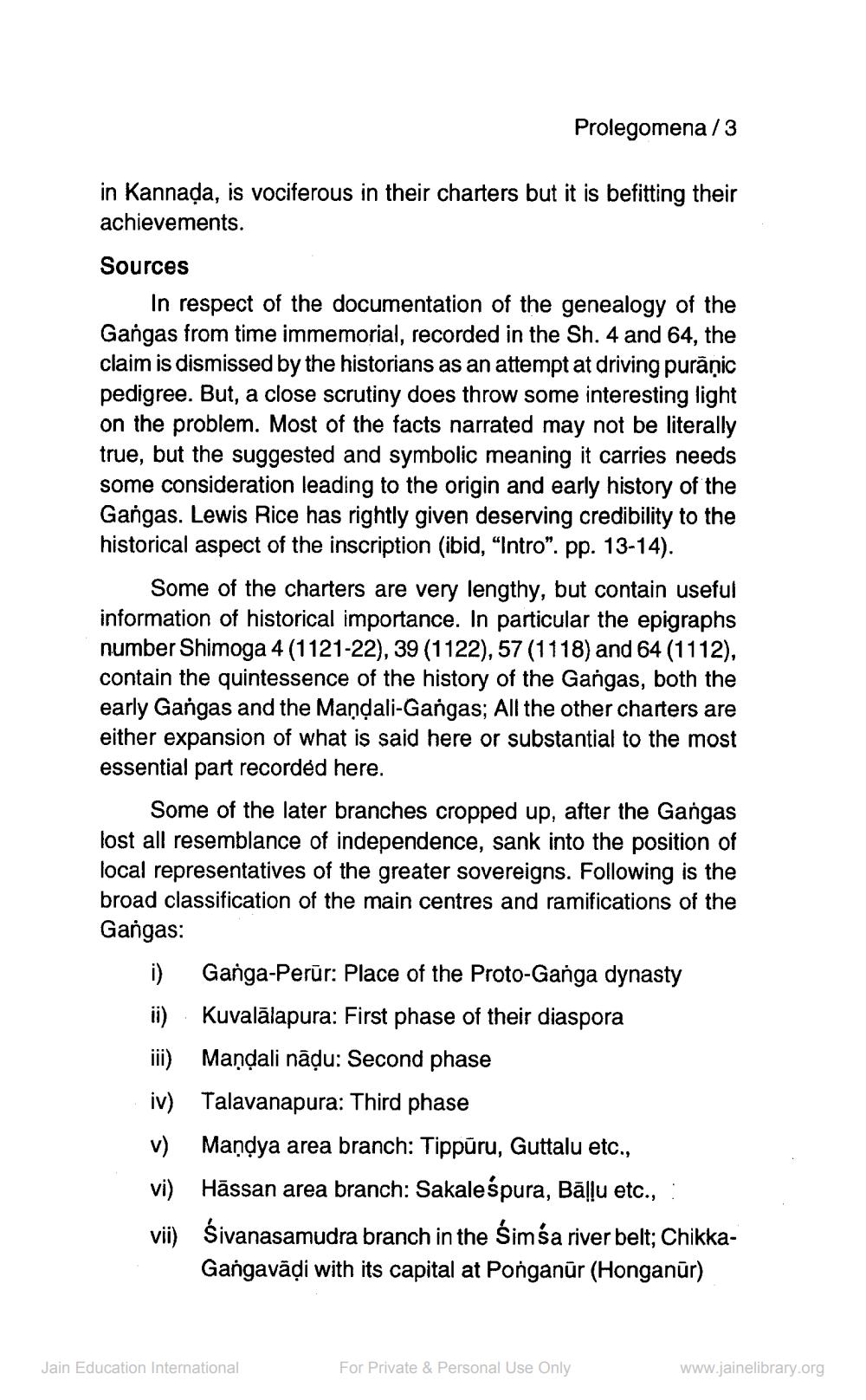________________
Prolegomena/3
in Kannada, is vociferous in their charters but it is befitting their achievements. Sources
In respect of the documentation of the genealogy of the Gangas from time immemorial, recorded in the Sh. 4 and 64, the claim is dismissed by the historians as an attempt at driving purāņic pedigree. But, a close scrutiny does throw some interesting light on the problem. Most of the facts narrated may not be literally true, but the suggested and symbolic meaning it carries needs some consideration leading to the origin and early history of the Gangas. Lewis Rice has rightly given deserving credibility to the historical aspect of the inscription (ibid, "Intro". pp. 13-14).
Some of the charters are very lengthy, but contain useful information of historical importance. In particular the epigraphs number Shimoga 4 (1121-22), 39 (1122), 57 (1118) and 64 (1112), contain the quintessence of the history of the Gangas, both the early Gangas and the Mandali-Gangas; All the other charters are either expansion of what is said here or substantial to the most essential part recorded here.
Some of the later branches cropped up, after the Gangas lost all resemblance of independence, sank into the position of local representatives of the greater sovereigns. Following is the broad classification of the main centres and ramifications of the Gangas:
i) Ganga-Perūr: Place of the Proto-Ganga dynasty ii) Kuvalālapura: First phase of their diaspora iii) Mandali nāņu: Second phase iv) Talavanapura: Third phase v) Mandya area branch: Tippūru, Guttalu etc., vi) Hāssan area branch: Sakaleśpura, Bāļļu etc., : vii) Śivanasamudra branch in the Simsa river belt; Chikka
Gangavāời with its capital at Ponganūr (Honganūr)
Jain Education International
For Private & Personal Use Only
www.jainelibrary.org




